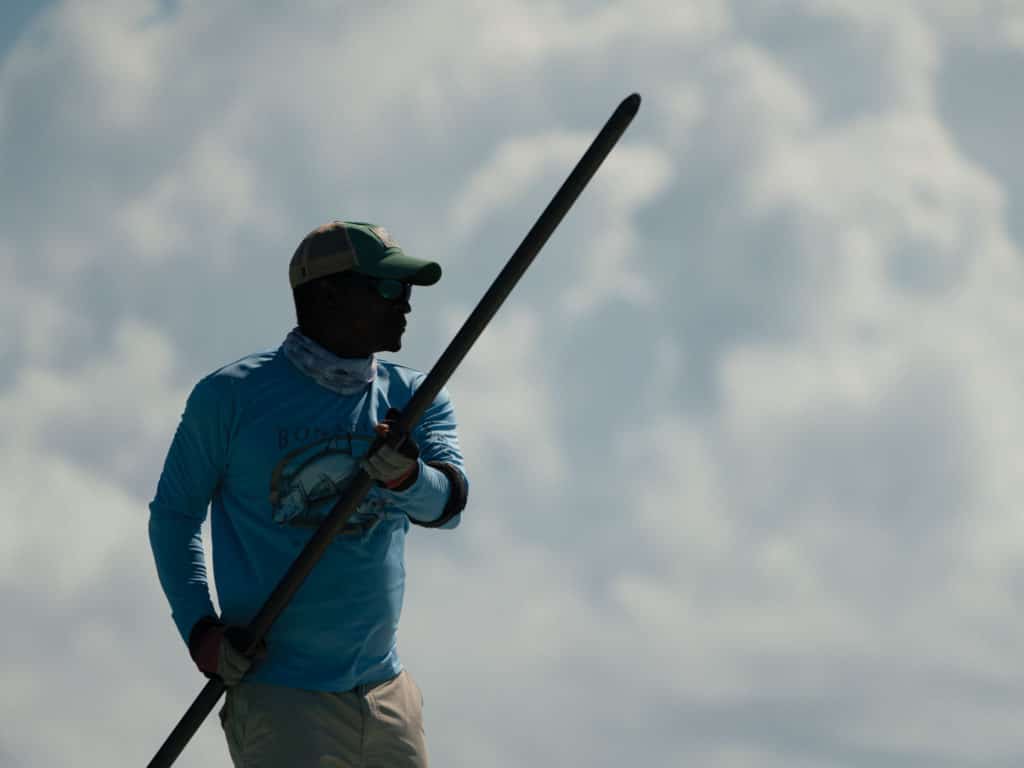
Although inshore purists are often sorely tempted, poling platforms and push poles are not expressly designed for jousting with annoying Jet Skis. On the contrary, this combination on flats boats and technical poling skiffs opens up vast stretches of super-skinny water that is inaccessible to boats equipped only with trolling motors. Deliberate poling is much quieter than the pulse of a troller, and most craft will float shallower than the motor’s shaft length. The height advantage of the elevated platform also lets the poler spot fish or movement before fish are alerted, plus the boat can be quickly repositioned for better casting angles.
To take full advantage of poling opportunities, the first step is choosing the right push pole. Construction materials include fiberglass, hybrid glass and graphite, and carbon fiber and graphite, with weights decreasing per foot with each respective option. The price tags increase for those on crash diets, though.
Pole length is determined by the length of the boat, height of the platform, depth of the water normally encountered, and the bottom consistency. The general rule of thumb is to add 3 feet of pole beyond the boat length, but soft pluff mud bottom or deeper beachside flats might force the addition of an extra foot or two. Go too long, and docking and trailering or storage become problematic.
If you’re making the transition from troller to poler, get the lightest pole you can afford based on your expected use. Less weight means less fatigue and easier handling. Longer lengths equal more hand-over-hand force without replanting. Using a pair of gloves like those made by Fish Monkey improves grip and reduces wear. And when you do slowly ease up on a tailing redfish for the perfect cast, a satisfied sigh and the whizz of line zipping off the reel will be the perfect soundtrack.








